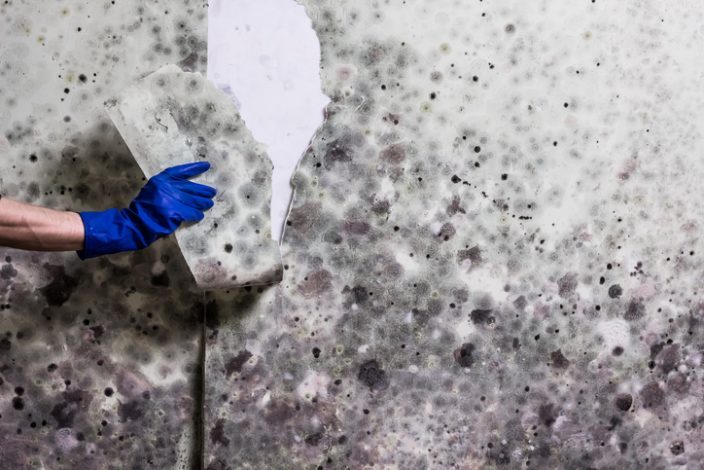Making Certain Post Remediation Verification Accuracy
Wiki Article
Effective Blog Post Mold Remediation Solutions for Your Home
Mold and mildew development in homes can be a consistent problem, usually requiring an organized technique for efficient post-remediation services. From understanding the factors that add to mold growth to implementing correct cleaning strategies and moisture control actions, the process can be complex yet crucial for preserving a healthy and balanced living environment. In addition, discovering natural remediation solutions and establishing a routine for recurring upkeep are vital components of a comprehensive mold remediation approach. As home owners aim to resolve mold issues, discovering the most reliable options comes to be paramount for the well-being of their families.Comprehending Mold And Mildew Growth Elements
Mold growth is influenced by a range of factors that are important to understand in order to properly attend to and stop its spreading. Recognizing these aspects is important in carrying out successful mold remediation approaches. The key variable adding to mold growth is dampness. Mold and mildew spores need moisture to thrive and sprout, making moist or damp settings extremely vulnerable to mold and mildew infestations. Poor ventilation can additionally bring about moisture buildup, creating an excellent breeding place for mold.
Furthermore, airflow and light direct exposure can impact mold development. Areas that lack proper ventilation and all-natural light are a lot more susceptible to mold and mildew advancement. By addressing these variables thoroughly, individuals can effectively mitigate mold development and protect their living environments.
Appropriate Mold And Mildew Cleansing Strategies
Using effective cleansing approaches is important in preventing the reoccurrence and dealing with of mold and mildew contamination in interior settings. The very first step in correct mold and mildew cleansing is to include the afflicted area to avoid the spread of spores to unpolluted locations.
Implementing Moisture Control Actions
To successfully protect against mold development and contamination in interior atmospheres, implementing dampness control procedures is critical. Moisture is the primary element that gas mold and mildew development, making it important to take care of humidity levels within the home. One reliable measure is to use dehumidifiers to maintain interior moisture degrees listed below 60%. Furthermore, ensuring correct ventilation in locations prone to moisture build-up, such as cooking areas and restrooms, can aid reduce the threat of mold growth. Frequently checking and repairing any leaks in plumbing, roofs, or home windows is also necessary in protecting against excess wetness build-up. Utilizing exhaust fans while cooking or bathing, and enabling air circulation by keeping furniture a little away from wall surfaces can aid in wetness control. Furthermore, using moisture-resistant products in high-humidity locations, such as mold-resistant drywall and paints, can be advantageous. By carefully executing these moisture control steps, homeowners can properly minimize the possibility of mold recontamination and maintain a healthy and balanced interior environment.Utilizing All-natural Remediation Solutions
After successfully implementing dampness control measures to stop mold and mildew growth in interior atmospheres, homeowners can now check out the effectiveness of all-natural remediation remedies in preserving a healthy space. All-natural removal remedies make use of eco friendly techniques to fight mold and mold, making them a preferred option for those seeking safe alternatives. One such service is making use of vinegar, an all-natural antimicrobial agent, to disinfect and clean surfaces polluted by mold and mildew. Merely water down vinegar with water and spray it onto the affected areas, permitting it to sit for a few hours prior to wiping clean. Furthermore, tea tree oil, understood for its antifungal homes, can be combined with water and sprayed onto mold-infested surface areas to prevent further development. One more natural option is hydrogen peroxide, which can successfully kill mold on numerous surfaces without leaving harmful deposits behind. By incorporating these natural removal solutions into their cleaning regimens, house owners can properly combat mold growth while promoting a much healthier indoor environment for themselves and their families.
Keeping a Mold-Free Atmosphere
On a regular basis checking areas prone to mold and mildew development, such as bathrooms, cooking areas, cellars, and attic rooms, is vital. Appropriate air flow in areas with high moisture levels is likewise essential to stopping mold and mildew growth.Furthermore, preserving sanitation in the home is essential for mold and mildew prevention. Consistently cleaning and cleaning surfaces, rugs, and upholstery can assist get rid of mold spores prior to they have an opportunity to multiply and resolve. Making use of mold-resistant items for building and construction products and furnishings can additionally assist in developing a mold-free setting. Finally, keeping indoor plants in check and making sure correct water drainage in exterior landscape design can lessen moisture build-up, decreasing the probability of mold problems. By complying with these aggressive maintenance techniques, property owners can effectively support a mold-free living space.
Final Thought
In final thought, it is necessary to resolve mold and mildew development variables, make use of proper cleansing strategies, apply dampness control measures, make use of natural removal solutions, and preserve a mold-free atmosphere in order to efficiently manage message mold remediation in your house - Post remediation mold testing near me. By adhering to these approaches, you can prevent mold and mildew from persisting and guarantee a healthy living environment for you and your family members
The main factor contributing to After mold remediation mold and mildew growth is dampness. Mold and mildew spores require wetness to germinate and flourish, making damp or humid settings extremely prone to mold and mildew infestations.To properly prevent mold and mildew development and contamination in indoor settings, executing dampness control steps is paramount. Additionally, making certain appropriate air flow in areas prone to moisture build-up, such as washrooms and cooking areas, can aid reduce the threat of mold and mildew growth.After efficiently carrying out dampness control steps to stop mold and mildew development in interior environments, property owners can now discover the effectiveness of all-natural remediation remedies in preserving a healthy living space.
Report this wiki page